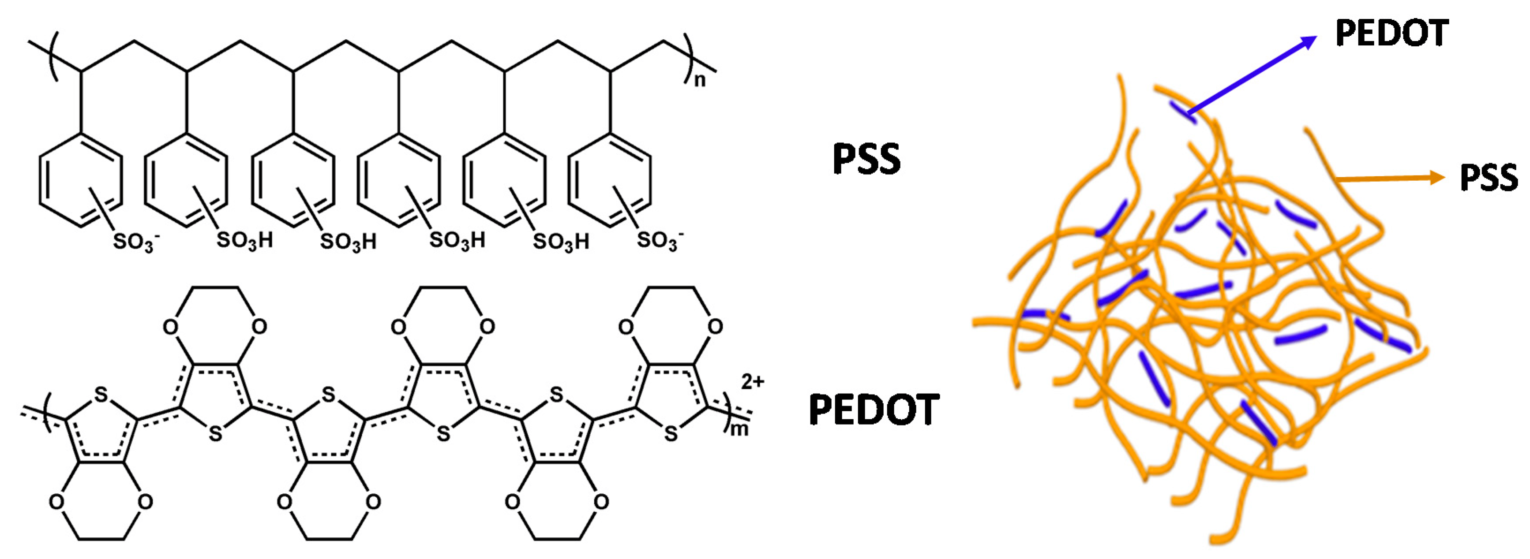Introduction
Conducting polymers have emerged as an important class of materials over the last few decades due to their unique electrical and optical properties. One such conducting polymer that has gained significant attention is poly(3,4-ethylenedioxythiophene), commonly known as PEDOT.
What is PEDOT?
PEDOT is a thiophene-based polymer that was first synthesized in the 1980s at Bayer AG. Its monomer unit contains ethylenedioxy groups which enhance its solubility and conductivity compared to other polymer conductors like polyacetylene. At its core, PEDOT consists of a conjugated π-electron system along the polymer backbone similar to other organic conductors. However, the inclusion of heteroatoms and polarizable side chains in its structure render it highly stable, processable and conductive even in its neutral state.
PEDOT possesses excellent film-forming properties and displays conductivity values as high as 1000 S/cm when doped with counter-ions like polystyrene sulfonate (PSS). The π-electron delocalization and extensive orbital overlap along the conjugated backbone allows free charge carrier movement, making PEDOT conductive. Its high stability, solubility and electrical properties have enabled a diverse range of applications from antistatic coatings and solar cells to biomedical sensors and displays.
Synthesis and Properties of PEDOT
There are a few common methods used for the synthesis of PEDOT:
Oxidative Chemical Polymerization: This is the most widely used method where EDOT monomer undergoes chemical oxidation polymerization using oxidizing agents like iron(III) salts in the presence of a dopant like PSS. The reaction yields a highly conductive PEDOT:PSS dispersion.
Electrochemical Polymerization: In this technique, EDOT is electrolytically polymerized onto an electrode surface by applying an oxidative potential in a monomer-containing solution. Thin films with well-controlled thickness can be obtained.
Vapor-Phase Polymerization: Here, EDOT vapor is condensed on a substrate surface and polymerized via oxidative chemical vapor deposition. Uniform thick films are deposited but the process is more complex.
Some important properties of PEDOT include:
– Conductivity: Up to 1000 S/cm when doped with counter-ions like PSS. Conductivity depends on degree of doping.
– Thermal stability: Can withstand temperatures up to 250°C in air.
– Environmental stability: Resistant to UV light, chemical, electrochemical and thermal degradation.
– Optical properties: High transmittance in visible and near-IR region. Displays switchable electrochromic effects.
Applications of PEDOT
The wonderful stability and conductivity of PEDOT has enabled its usage in a wide range of technologies over the past decade:
Antistatic Coatings: PEDOT coatings provide antistatic and conductivity-enhancement properties for plastics, metals and other substrates. Used in electronics packaging and transportation industry.
Bioelectrodes: Biocompatible PEDOT coatings can interface neurons with electrodes, paving the way for neural probes and brain-computer interfaces.
Displays: PEDOT is used as the active electrode layer in OLED displays and electrophoretic Electronic Paper Displays (EPD) due to its responsiveness and electrochromic properties.
Solar Cells: PEDOT serves as transparent contact layer, hole-transport material and antireflection coating in various types of solar cells to boost conductivity and efficiency.
Electrochromic devices: PEDOT displays colored states when oxidized/reduced, enabling applications as smart windows, mirrors and displays.
Touch Sensors: Its stretchability and conductivity allows usage of PEDOT in wearable and flexible touch sensors for consumer devices.
PEDOT’s exceptional electro-optical properties, environmental stability and facile processability have made it a miracle polymer of this era. Continued research on synthesis methods to improve conductivity and development of new applications will help PEDOT further transform technologies in the coming years. The future of organic electronics depends greatly on the further advancement of exceptional polymers like PEDOT.
*Note:
1. Source: Coherent Market Insights, Public sources, Desk research
2. We have leveraged AI tools to mine information and compile it

